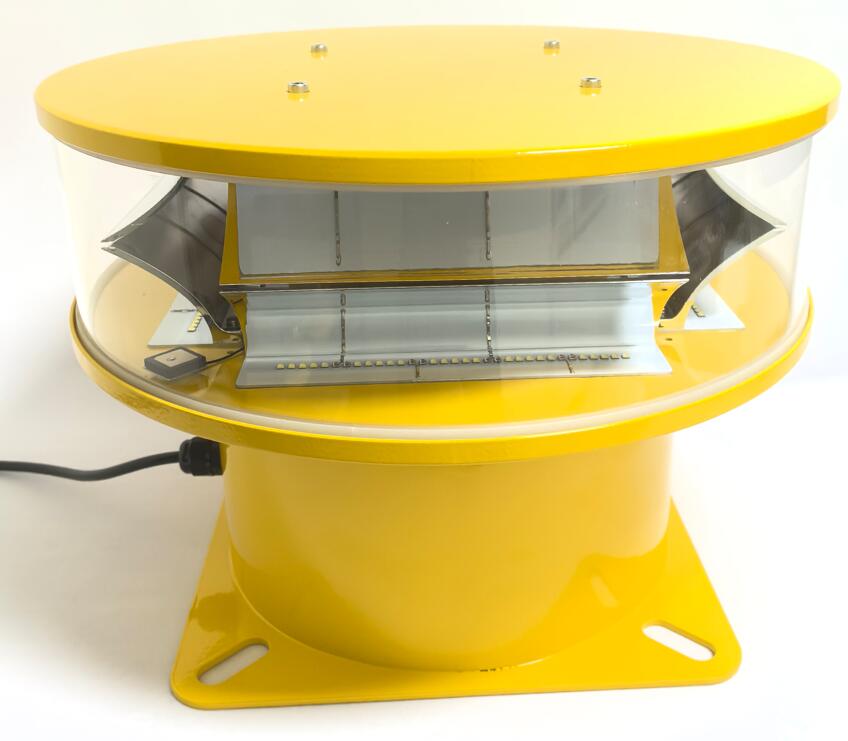Beacons of Safety: The Essential Function of High Intensity Obstacle Lights
In an era defined by soaring urban landscapes and rapidly expanding infrastructure, the invisible highways of the sky have become increasingly congested and complex. The proliferation of tall structures—from wind farms and skyscrapers to telecommunications masts and bridges—presents a constant challenge to aerial navigation. Amidst this evolving environment, High Intensity Obstacle Lights serve as critical safeguards, providing an unambiguous visual warning to pilots and ensuring the safe passage of aircraft through potentially hazardous airspace. These powerful luminous sentinels are not optional accessories but fundamental, non-negotiable components of global aviation safety protocols.
The core mandate of a High Intensity Obstacle Light is to ensure a structure is conspicuously visible from a significant distance, typically in excess of 20 nautical miles. This long-range detection capability is crucial for giving pilots ample time to identify a hazard and adjust their flight path accordingly. Operating primarily during daylight and twilight hours when ambient light is strongest, these systems typically emit a brilliant white flash. This specific characteristic is engineered to cut through haze, glare, and bright backgrounds, offering a stark contrast that red beacons cannot provide under these conditions. The standardized flash pattern creates a universal visual language understood by aviators across the globe.

Technological advancement has propelled these systems into a new era of reliability and efficiency. The widespread adoption of LED (Light-Emitting Diode) technology represents a significant leap forward. Modern High Intensity Obstacle Lights leverage LEDs to achieve unparalleled luminous intensity while demanding a fraction of the energy required by older xenon or incandescent systems. Beyond energy savings, LEDs offer a formidable operational lifespan, often exceeding 100,000 hours, which dramatically reduces the need for maintenance and replacement—a critical factor for lights installed on remote offshore wind turbines or inaccessible broadcast towers. Their solid-state construction provides inherent resilience against vibration, extreme temperatures, and severe weather.
| high intensity obstacle lights |
A key aspect of their effectiveness lies in their integration into a holistic obstacle marking strategy. A High Intensity Obstacle Light is seldom used in isolation. It is typically the pinnacle component of a multi-tiered lighting system on a tall structure. For instance, a very high tower might be outfitted with high-intensity lights at the top, medium-intensity lights on its mid-sections, and low-intensity lights at lower levels. This creates a full, recognizable silhouette of the obstacle. Furthermore, these systems are increasingly "smart." Equipped with photocells, they automatically activate and adjust their intensity based on real-time ambient light conditions. Many are now part of networked monitoring systems that can self-diagnose faults and instantly alert ground crews to any performance issues, preventing prolonged periods of inactivity.
The deployment and specification of these lights are governed by a rigorous international framework established by bodies like the International Civil Aviation Organization (ICAO) and enforced by national authorities. These regulations are meticulous, dictating the required intensity, flash character, color, and placement based on the structure’s height, location, and proximity to airports and flight paths. This global standardization is the bedrock of their effectiveness. A pilot navigating from Frankfurt to Dubai encounters a consistent and reliable warning system, enabling instantaneous recognition and reaction regardless of national borders.
| high intensity obstacle light |
Deploying High Intensity Obstacle Lights presents unique engineering challenges. Each installation must be tailored to withstand its specific environmental onslaught—whether it’s the corrosive salt spray of an offshore installation, the ice buildup of a mountain-top site, or the extreme heat of a desert environment. A parallel and growing challenge is the need to mitigate ecological impact, particularly concerning light pollution and its effects on nocturnal wildlife and astronomical observations. Manufacturers are addressing this through sophisticated optical systems that precisely focus the beam upward towards approaching aircraft, minimizing lateral and downward light spill. The development of adaptive lighting systems, which can modulate output based on actual aircraft proximity detected via radar or ADS-B, represents the next frontier in balancing safety with environmental responsibility.
As we look to the future, the role of High Intensity Obstacle Lights will only expand in importance. The advent of urban air mobility (UAM) and a dramatic increase in unmanned aerial vehicle (UAV) traffic will redefine the concept of an obstacle. The future may see these lights evolve from passive visual markers into interactive nodes within a broader digital ecosystem. They could be integrated with transmitters that broadcast precise location and identification data directly to an aircraft’s cockpit systems or drone’s flight computer, facilitating automated collision avoidance.
High Intensity Obstacle Lights are far more than simple lamps; they are a profound expression of the aviation industry’s unwavering commitment to safety. Their persistent, rhythmic flash is a heartbeat of security in the sky, a vital pulse that warns, guides, and protects. As humanity continues to build upwards and push the boundaries of aerial mobility, these luminous guardians will remain an indispensable part of the infrastructure, ensuring that the sky remains a safe and navigable domain for generations to come.
